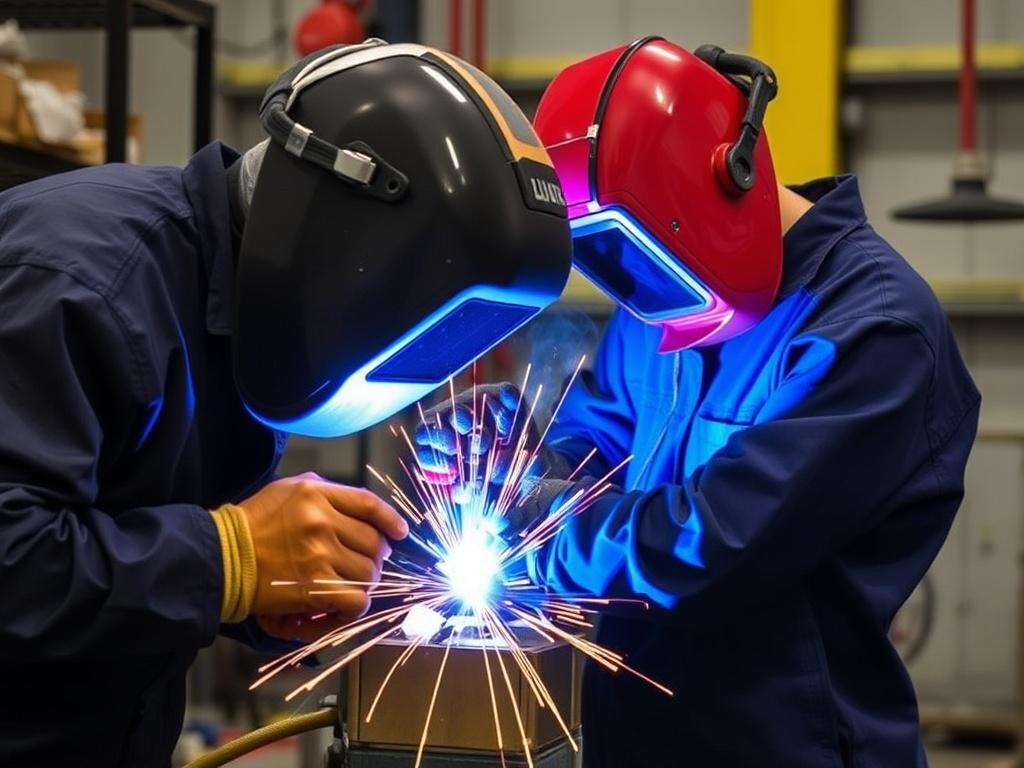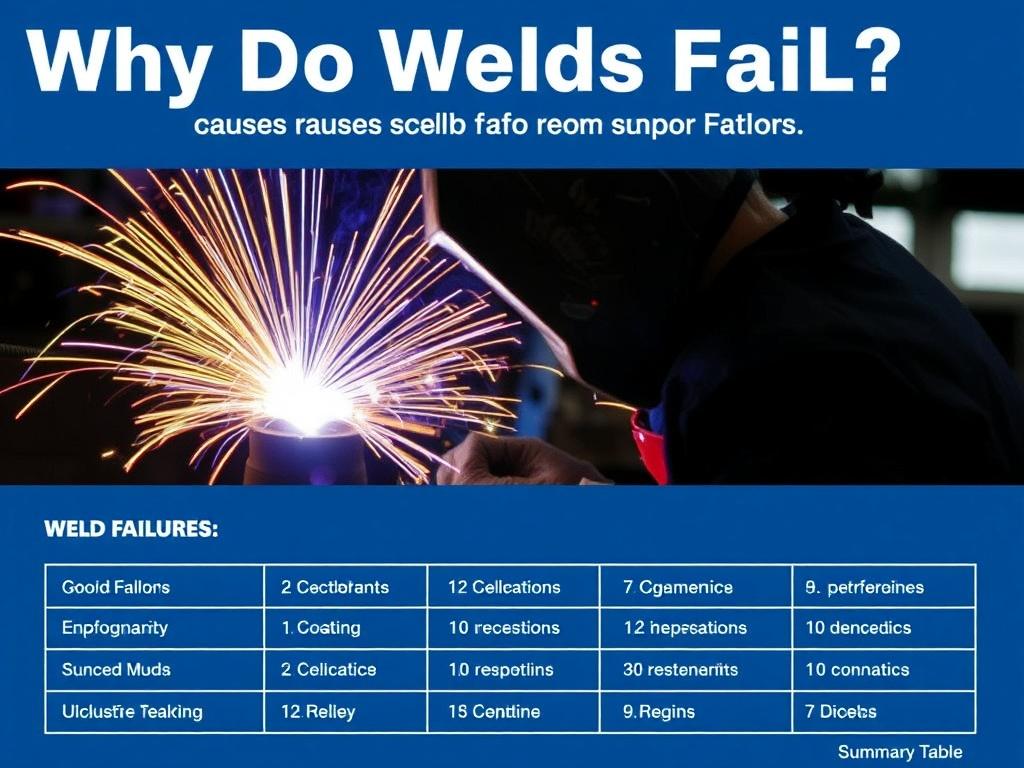
Welding is an essential technique used across numerous industries, from construction and automotive manufacturing to aerospace and shipbuilding. It involves joining two pieces of metal or thermoplastics together by melting the base material and adding a filler material to create a strong bond. Despite advancements in welding technology and proper training, weld failures still occur, sometimes with devastating consequences. To truly understand why welds fail, we need to explore the common causes and their practical solutions. This knowledge not only helps professionals improve their craft, but it also safeguards structures, machinery, and even lives.
In this article, we will delve into the many reasons why welds fail, including issues related to materials, technique, environment, and equipment. We will also discuss effective solutions and preventive measures to ensure strong, safe, and durable welds. Whether you are a beginner welder, an experienced professional, or simply curious about the topic, this comprehensive guide will provide deeper insights.
Introduction to Weld Failures
Welding is a skill that combines science, art, and experience. When performed correctly, a good weld can withstand immense stress and strain. However, when something goes wrong, welds can crack, break, or corrode, leading to costly repairs or catastrophic failures. Weld failure can happen immediately during fabrication or after some time under service conditions. Understanding the underlying causes is the first step towards preventing these failures.
Weld failure typically refers to the fracture or separation of a joint that was supposed to remain intact under load. This failure can manifest in different ways – including cracks, porosity, lack of fusion, slag inclusions, undercut, and more. Some failures occur internally and are invisible without testing, while others are visibly apparent.
To systematically address weld failures, professionals often look at these three broad categories:
- Material factors
- Welding process factors
- Environmental and service conditions
As you continue reading, we will break down each category to uncover common causes and suggest practical solutions.
Common Causes of Weld Failures
1. Poor Material Selection and Preparation
The foundation of a strong weld is proper material selection and preparation. Using materials that are incompatible or inadequately cleaned can introduce problems.
For example, if the base metals have excessive rust, oil, dirt, or paint on their surfaces, the weld quality suffers. Contaminants can cause porosity and inclusions inside the weld bead, weakening its structural integrity. Improperly matched materials—for instance, welding carbon steel to stainless steel without appropriate filler materials and settings—can also cause failures due to differences in thermal expansion rates and metallurgical properties.
Solutions:
- Thoroughly clean the surfaces to be welded using wire brushing, grinding, or chemical cleaners.
- Choose compatible base metals and filler materials suitable for the application.
- Preheat materials or use post-weld heat treatments if required to reduce welding stresses.
2. Inadequate Welding Technique
The welder’s skill greatly influences the quality of a weld. Technique includes parameters such as travel speed, angle of the welding torch, heat input, and the type of welding process used (e.g., MIG, TIG, Stick welding).
Incorrect technique can lead to lack of fusion—where the filler metal does not properly bond with the base metal—or excessive heat input causing distortion and weak microstructure formation. Inconsistent weld bead appearance or poor penetration often signals technique problems.
Solutions:
- Proper training and certification of welders are essential.
- Following welding procedure specifications (WPS) that outline recommended parameters.
- Consistent monitoring of welding parameters like voltage, current, and speed.
3. Equipment Malfunction or Improper Settings
Welding equipment requires regular maintenance and proper calibration. Equipment defects or wrong settings can cause insufficient shielding gas coverage, erratic arc stability, or inconsistent wire feeding. All these issues can result in weak welds.
For example, gas leaks in shielding systems expose the molten weld pool to atmospheric contamination, causing porosity and inclusions. Machines not adjusted to the proper amperage or voltage can lead to undersized or overheated welds.
Solutions:
- Conduct routine equipment inspections and maintenance.
- Calibrate machines before starting critical welding jobs.
- Ensure proper gas flow rates and use high-quality shielding gases.
4. Environmental Factors
Environment plays a huge role in weld quality. Outdoor welding can be affected by wind, rain, humidity, and temperature extremes.
Wind can disperse shielding gas, resulting in weld contamination. Cold weather can cause rapid cooling, leading to brittle welds and cracking. Moisture on the base metal or welding rods may introduce hydrogen, causing hydrogen-induced cracking, also called cold cracking.
Solutions:
- Use windshields or weld in sheltered areas.
- Keep materials dry and store welding consumables properly.
- Preheat materials and use low hydrogen electrodes in critical applications.
5. Inadequate Joint Design
The geometry of the weld joint directly impacts its strength. Poor joint design may cause stress concentration points or insufficient access for proper welding.
For example, joints with improper bevel angles or incorrect root gaps may result in incomplete penetration or lack of fusion inside the joint. Complex joints may also trap slag or reduce the welder’s ability to maintain consistent technique.
Solutions:
- Design weld joints according to industry standards and guidelines specific to materials and applications.
- Use proper edge preparation tools to achieve accurate bevels and gaps.
- Consider accessibility and the welder’s position to avoid awkward angles.
6. Residual Stresses and Distortion
Welding involves localized heating and cooling, producing thermal gradients that induce residual stresses within the welded components. These stresses can cause distortion or cracking, especially in thicker or restrained parts.
If not controlled, residual stresses contribute to stress corrosion cracking or cold cracking, significantly reducing structural reliability.
Solutions:
- Apply preheating to reduce temperature gradients.
- Use controlled welding sequences to balance heat input.
- Apply post-weld stress relief heat treatment (PWHT) when necessary.
7. Metallurgical Defects
Some weld failures arise due to inappropriate metallurgical transformations occurring within the heat-affected zone (HAZ) and weld metal. For instance, formation of brittle phases, grain coarsening, or hard spots can impair weld durability.
Hydrogen-induced cracking and intergranular corrosion are common metallurgical problems linked to poor welding practices or material selection.
Solutions:
- Select suitable filler metals with compatible microstructures and mechanical properties.
- Implement proper cooling rates and heat treatment after welding.
- Avoid moisture contamination to reduce hydrogen uptake.
How to Detect Weld Failures

Early detection of weld defects is vital for ensuring safety and preventing catastrophic failures. Various non-destructive testing (NDT) methods are used to assess weld quality without damaging the parts.
| Testing Method | Description | Common Use |
|---|---|---|
| Visual Inspection | Simple inspection of the weld surface for visible defects such as cracks, porosity, or undercut. | Routine inspections and initial checks |
| Ultrasonic Testing (UT) | Uses high-frequency sound waves to detect internal flaws like inclusions and lack of fusion. | Critical welds in pressure vessels, pipelines, aerospace |
| Radiographic Testing (RT) | Uses X-rays or gamma rays to create images of internal weld defects. | Widely used in construction and manufacturing |
| Magnetic Particle Testing (MT) | Detects surface and near-surface discontinuities in ferromagnetic materials. | Automotive parts, heavy equipment |
| Dye Penetrant Testing (PT) | Uses a colored liquid to reveal surface cracks and porosity. | Ideal for non-ferrous metals and inspecting surfaces |
Each method serves a specific purpose and is often used in combination to ensure thorough weld evaluation. Choosing the right inspection technique depends on part size, material, criticality, and budget.
Top Solutions to Prevent Weld Failures
Proper Training and Certification of Welders
The single most effective way to avoid weld failures is ensuring welders are adequately trained and certified. Industry standards like AWS (American Welding Society) provide certifications that verify a welder’s proficiency with specific processes and materials.
Continuous education, hands-on practice, and staying updated with best practices allow welders to maintain high-quality standards throughout their careers.
Using Welding Procedure Specifications (WPS)
A Welding Procedure Specification documents the required parameters, techniques, and conditions for a specific welding job. Adhering to the WPS ensures repeatable and reliable welds, minimizing human error.
Material Preparation and Handling
Cleaning, preheating, and proper storage of base metals and consumables are fundamental steps often overlooked. Proper material processing eliminates contamination and prepares metals for optimal fusion.
Environmental Control
Controlling the welding environment by using windshields, controlled heating, or indoor welding facilities reduces the risk posed by adverse weather and temperature fluctuations.
Equipment Maintenance
Regular inspection and upkeep of welding machines optimize performance and consistency. Using quality consumables ensures proper chemical and physical properties for the weld.
Post-Weld Heat Treatment and Stress Relief
For many critical applications, heat treatment after welding improves mechanical properties and reduces residual stresses, enhancing durability and reducing the chance of cracking.
Summary Table: Causes and Solutions of Weld Failures

| Cause | Explanation | Solution |
|---|---|---|
| Poor Material Preparation | Contaminated surfaces causing porosity and inclusions | Clean materials thoroughly and select compatible alloys |
| Incorrect Welding Technique | Lack of fusion, excessive heat causes weak welds | Proper training and adherence to WPS |
| Equipment Issues | Faulty settings or maintenance lead to poor welds | Routine equipment calibration and maintenance |
| Environmental Conditions | Wind, moisture, and temperature affect weld quality | Control environment and use proper consumables |
| Poor Joint Design | Stress concentration and lack of access reduce strength | Design according to standards with proper edge prep |
| Residual Stresses | Thermal gradients cause distortion and cracking | Preheat, controlled sequences, and PWHT |
| Metallurgical Defects | Formation of brittle phases and hydrogen cracks | Use compatible fillers and proper heat treatment |
Real World Examples of Weld Failures and Lessons Learned
One of the most well-documented weld failures is the Silver Bridge collapse in 1967, when a stress corrosion crack amplified over time due to poor materials and inadequate inspection, leading to the tragic loss of 46 lives. This event underscored the importance of rigorous welding quality control and inspection regimes.
In industries like aerospace, weld failures can result in mission-critical issues. Manufacturers often employ multiple layers of inspection, sophisticated welding automation, and extensive training to minimize risk.
Smaller-scale failures occur frequently in construction when shortcuts in preparation or technique are taken, emphasizing the need for continual training and supervision.
The Future of Welding and Weld Failure Prevention
Modern technology is transforming welding quality control. Automated welding robots provide consistent high-quality welds and reduce human error. Advanced sensors and real-time monitoring systems can detect weld defects as they form, enabling immediate corrections.
Additionally, research into new materials, such as high-strength alloys and composites, requires updated welding techniques and standards to avoid premature failures.
Artificial intelligence (AI) and machine learning are increasingly being used to analyze welding data, predict failure modes, and optimize parameters for superior weld integrity.
Conclusion
Understanding why welds fail is crucial for anyone involved in metal fabrication or structures reliant on durable joints. From material preparation to equipment maintenance, technique, and environmental factors, multiple variables contribute to the final quality of a weld.
By addressing these common causes and applying proven solutions—such as proper training, equipment upkeep, and environmental controls—weld failures can be significantly reduced. The continuous evolution of technology and methods promises even greater weld integrity in the future.
Whether you’re welding a small project or working on large industrial installations, investing time and effort to understand and prevent weld failures will pay off in safety, reliability, and cost savings.
Thank you for joining this deep dive into the common causes and solutions for weld failures. Remember, a strong weld starts with knowledge and care!
